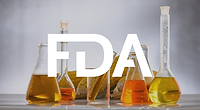EFSA Publishes Annual Report on Pesticide Residue Levels in Food

The European Food Safety Authority (EFSA) has published its 2020 EU report on pesticide residue levels in food, which is conducted annually and is carried out across EU Member States, Iceland, and Norway. The report summarizes the results of the EU-coordinated multiannual control program (EU MACP) and national control programs (MANCP). The latest report covers over 88,000 food samples collected in the EU in 2020. The results show that 94.9 percent of samples fell within legally permitted levels.
EFSA also provides accessible charts and graphs that represent the data in its report.
EU MACP includes most food products consumed by EU citizens as indicated in the EU MACP Regulation (EU) 2019/533; the same food products are sampled randomly every three years (data from the 2020 report on pesticide residue levels in food can be compared with data from 2017 and 2014). For the 2020 EU MACP, 12 food products were tested: carrots, cauliflowers, kiwi fruits (green, red, yellow), onions, oranges, pears, potatoes, dried beans, brown rice, rye grain, bovine liver, and poultry fat. Of the 12,077 samples analyzed as part of EU MACP:
- 98.2 percent fell within legal limits for levels of pesticide residues
- 68.5 percent did not show quantifiable levels of pesticide residues
- 29.7 percent showed quantifiable level of pesticide residues that fell within legal limits
- 1.7 percent exceeded maximum residue levels (MRLs), 0.9 percent of which were found to be non-compliant after consideration of the measurement uncertainty; consideration of the uncertainty of analytical measurements is required before sanctions are imposed on food business operators for infringement of the MRL legislation.
Of the samples analyzed by the reporting nations, on average, 60 percent were domestic products, 22 percent were products from other EU countries, 14 percent were products from third-party countries, and 4 percent were products of unknown origin. Some nations were unable to meet EU MACP sampling targets due to the COVID-19 pandemic.
In addition to data collected under EU MACP, EFSA’s annual report also includes data collected from official control activities carried out by individual EU Member States, Norway, and Iceland. Official control activities are conducted by authorities in EU nations to verify business compliance with agri-food chain legislation. MANCP are risk-based, targeting products based on previous legal infringements or increased likelihood of containing pesticide residues, and therefore do not necessarily represent the whole picture of residue levels in food sold across Europe.
A total of 88,141 samples and 659 pesticides were analyzed, with an average of 264 pesticides per sample. Of the total quantity of analyzed samples:
- 94.9 percent fell within legal limits for levels of pesticide residues
- 54.6 percent did not show quantifiable levels of pesticide residues
- 40.3 percent showed quantifiable level of pesticide residues that fell within legal limits
- 5.1 percent exceeded MRLs, 3.6 percent of which were found to be non-compliant based on the measurement uncertainty.
The results of EU MACP and MANCP were used to estimate dietary exposure of EU consumers to pesticide residues. EFSA’s dietary risk assessment determined that food commodities analyzed in 2020 are unlikely to pose a concern for consumer health. EFSA still recommended several actions based on its findings, including taking corrective measures against EU non-approved pesticides, enacting import controls, and expanding or continuing monitoring of certain foods.
Looking for a reprint of this article?
From high-res PDFs to custom plaques, order your copy today!









